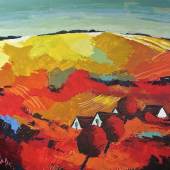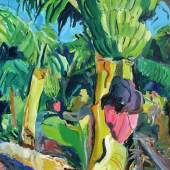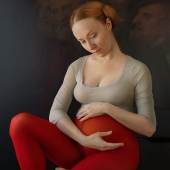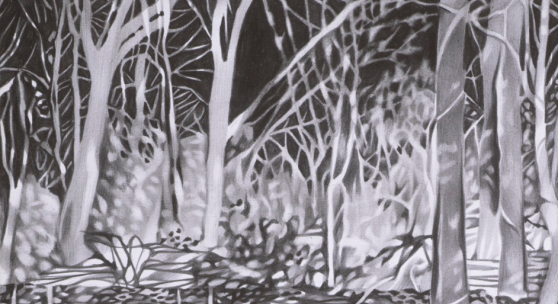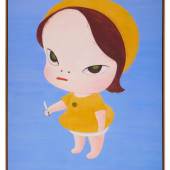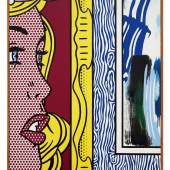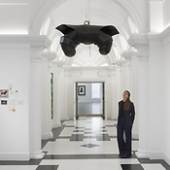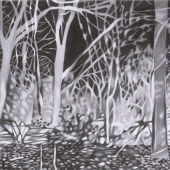Ausstellung
MARC BRANDENBURG SNOWFLAKE
-
Ausstellung06.02.2020 - 04.03.2020
In their poetic radicality, these pictures are embedded in a long subversive tradition ...They subtly examine the ways in which bodies move in urban public space, posing questions about power, class and territory. – Oliver Koerner von Gustorf (Art Historian & Critic; Editor, ArtMag by Deutsche Bank), 2020
Marc Brandenberg's exhibition Snowflake will present a series of new works, never previously exhibited. They explore the fragility and commonalities found at the fringes of society and address the conditions of contemporary living that are increasingly the object of hatred and ridicule: sensitivity, vulnerability, trauma, a lack of stamina and the understanding of uniqueness as innate to all individuals.
With an oeuvre that encompasses drawing, photography, performance and installation, Brandenburg's unique pencil drawings – and his innovative modes of immersive display – form a distinctive and highly acclaimed element of his practice. Self-taught, he is influenced by and draws from a range of sources: urban cultures of the mid-twentieth century, film, literature, activism and proliferating segregation to consider themes of nonconformity, performance, difference and isolation.
Executed in graphite and completed via a process of photography, reduction and inversion, these new works see the artist continue his experiments in the medium of drawing – at both monumental and smaller scales – while extending and honing in on his subject matter in response to the present cultural condition. Referencing Chuck Palanhiuk's 1996 novel, Fight Club, the exhibition's title Snowflake is represented both metaphorically and as embodied throughout Brandenburg's practice and display: larger-than-life scenes from a protest march are presented alongside smaller images of faceless figures – masked, heads bowed, or fully covered – severed from their surroundings and appearing as if cocooned or in free-fall, set amidst an expanse of undefined white space.
Experienced in a darkened room, the exhibition offers a totalising and two-fold experience, alluding to the photographic methods that inform Brandenburg’s production as well as to the severing from social rhetoric that occurs both as a result of these processes and in the real, lived experiences of many of his subjects. Lit by UV amidst a sea of pitch black, the works appear as abstract stills drawn from a film, highlighting Brandenburg's technique of inverting black for white and light for dark, while radically pushing the possibilities of drawing. The resultant images function as springboards into bizarre parallel world(s), reduced to their very fundamentals and freed from explicit social or political narrative.
Depicting drug users, street performers and improvised shakedowns (or acts of bribery and extortion) as isolated and suspended moments, freezing otherwise fleeting scenes in a state of permanence, Brandenburg hones in on the exhibition’s title in its many uses and guises. The term Snowflake is associated with the very topics he addresses: the white of the paper, the idea of drawing as crystallisation and the act of arresting time; it is embodied in the practices of representation and display that run throughout the exhibition; and it alludes to the word’s use in increasingly divided societies as a metaphorical insult, employed by and aimed at varying political, social and generational groups since it was first coined by Palahniuk over 50 years ago.
As with the developing understanding of the term Snowflake, its descriptive function an ever-changing social construct, Brandenburg’s figures present themselves not as individual identities but as signifiers of socially constructed groupings. Lacking backgrounds, features or facial expressions, they become objects awaiting imposed identities and narratives. Their anonymous status as empty signifier calls into question broader considerations of both embedded stereotyping and of its inherent subjectivity.
Only the form, the surface remains, at once material and psychological, often stretched or distorted … Brandenberg’s pictures subtly examine the ways in which bodies move in urban public space, posing questions about power, class and territory … They insistently embody that very sensibility which causes every snowflake-hater to cringe. – Oliver Koerner von Gustorf, 2020.
-
18.11.2021Sotheby’s To Announce Live Bidding Increments in Ether (ETH) Cryptocurrency For Banksy...
-
15.11.2021 - 19.11.2021Sotheby’s Lifts the Curtain onOne of the Most Important Sales Series Ever Staged $1 BILLION...
-
28.01.2022Sotheby’s New York Master Paintings and Sculpture Part ITotals $91 MillionSecond Highest...
-
* 1934 in Wien (Österreich), † 2014 in Wien (Österreich) Architekt, Theoretiker,...
-
29.05.2024 - 28.01.2025GRACE is a major new commission by Alvaro Barrington at Tate Britain. Bringing sound, painting...
-
06.02.2020 - 04.03.2020
Opening: Thursday 6 February 2020, 6–8pm 6 February – 4 March 2020

